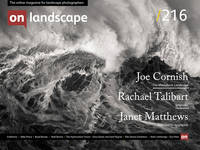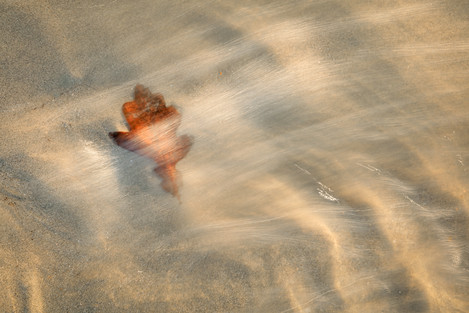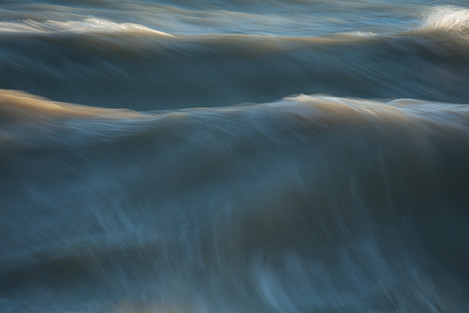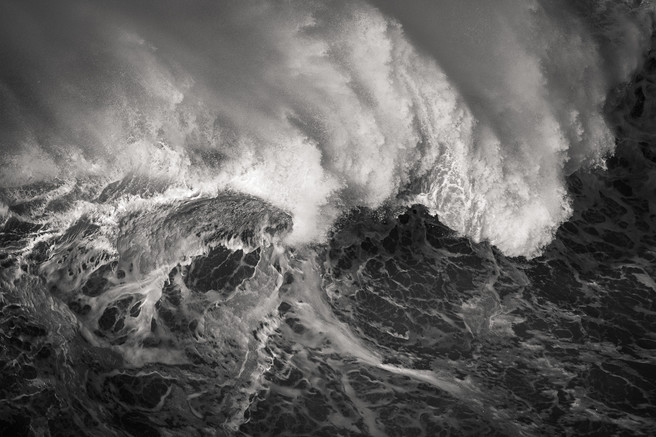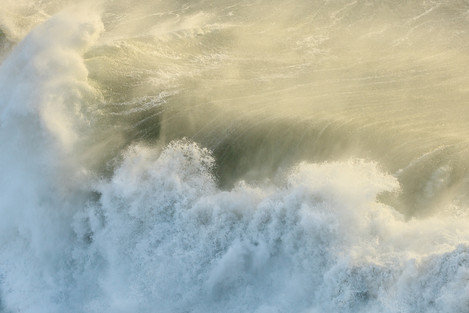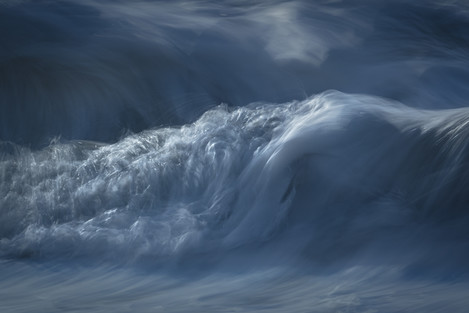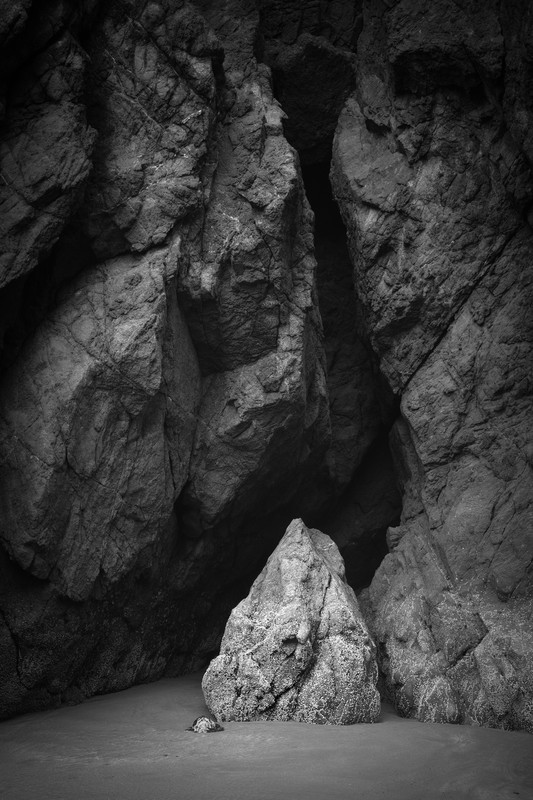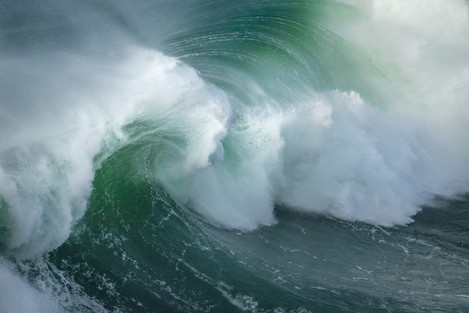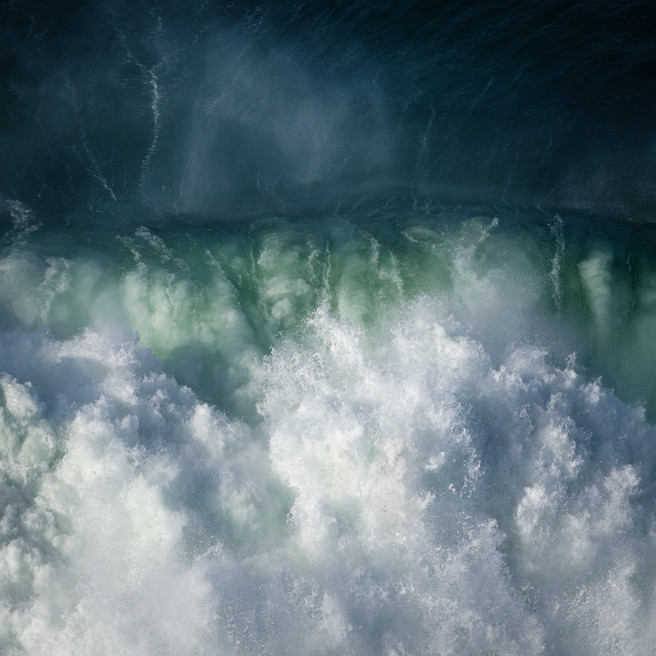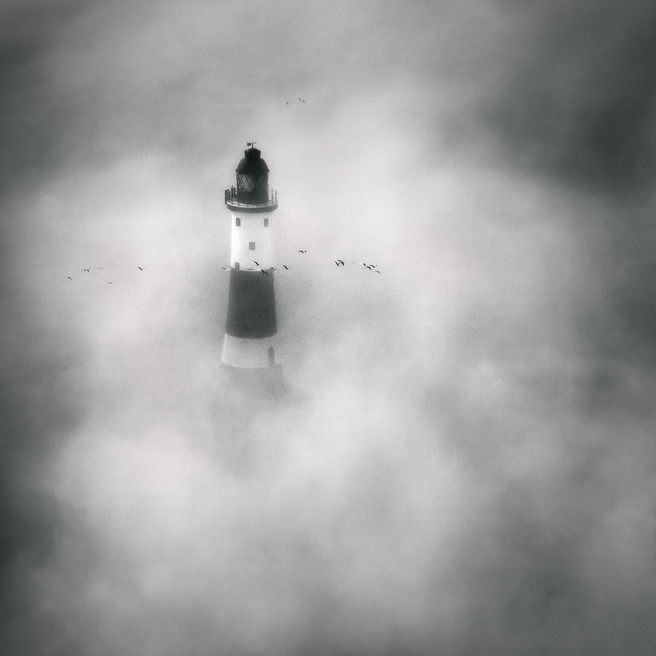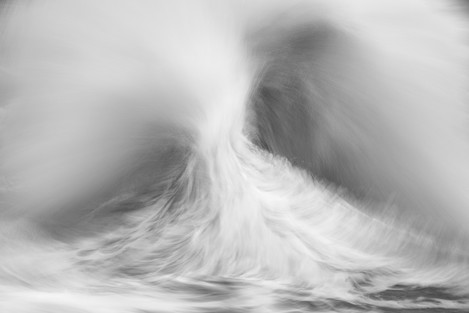Creating Kindly Vacancies for the Imagination

Rachael Talibart
Former lawyer turned professional coastal photographer based in the South of England, workshop-leader and public speaker. Rachael exhibits frequently and is represented by galleries in the UK and USA.

Charlotte Parkin
Head of Marketing & Sub Editor for On Landscape. Dabble in digital photography, open water swimmer, cooking buff & yogi.
Living up in Glencoe next to a sea loch, you can't help but tune into the tides and the power the moon has over the ocean. As a wild swimmer, I've experienced quite a few different aspects of the sea down the west coast of Scotland and you can't help but be in awe of the energy and beauty of the sea and waves. So when Rachael sent me an email about her forthcoming book I was excited to see what was inside. The images capture the sublime beauty of the sea, which transports me back to various beaches, feeling the gentle surge of the water between my toes as I stand on the edge of the water (not that I'd go swimming if I saw some of these waves offshore!).
We interviewed you back in 2017 as our featured photographer can you give us an overview of what projects you have been working on and how your photographic journey has continued since then?
Things have been a bit mad since then! I mentioned in that interview that I hoped to make a book of my Sirens portfolio and also exhibit it. Sirens was published by Triplekite in early 2018 and I have, since then, exhibited the collection a number of times. The series has won some nice awards and been published all over the world. It’s been a lot of fun, if rather overwhelming at times. I am now represented by some good galleries both here and in the USA and fine art print sales are my main business but it doesn’t matter how many prints I sell, it’s still the best rush every time someone parts with their hard-earned cash to buy one of my photos.
Sirens continues to grow and I’m happy to be able to include several of the newer ones in Tides and Tempests, but I have also moved on. Some of my more recent work is becoming slightly more abstract. The photos aren’t truly abstracts as you can still tell the subject is the ocean but I am enjoying exploring the textures within waves, and on the surface of the sea, and seem to be using ever longer focal lengths to achieve this. I’m also interested in the little details one can find at the tideline. I’ve been slowly accumulating photographs of these for the last 6 years and I’m pleased to be able to include some of them in the new book too.
When you make a business of photography or any artistic endeavour, it’s tempting to put the commercial potential of your work ahead of your own artistic satisfaction. Pushing slightly against that trend, I am enjoying making time for more experimental work, innovating without regard for the reception the new work might receive. For example, I have absolutely no profile in the video industry but am working on some projects that combine video, stills and moving stills. I may never publish the result – it’s just for my own pleasure. I suppose the other big change is that I am no longer motivated by competitions. There are so many of them out there now that it’s all a bit overwhelming. The publicity they can generate is sometimes useful and I won’t say I will never enter another competition but, on the whole, my interests lie elsewhere now
Has anyone or anything helped you in realising your photographic ambitions over the past few years?
I mentioned Jonathan Chritchley in my earlier interview. I have continued to enjoy Jonathan’s support and I now lead residential workshops for his business, Ocean Capture. The late and very much missed Steve Watkins of Outdoor Photography Magazine also continued to be supportive and encouraging. I’d also like to mention Finn Hopson who took a risk in giving Sirens its first solo show in his gallery in Brighton and ‘Wired’ magazine for featuring my work, after which everything got so exciting. Finally, not a person but a thing, lots of hard work lies behind everything. It’s not glamorous or interesting to read about, but it’s true.
Tell us about your new book 'Tides and Tempests', how did it start? Was it always intended to be realised as a book?
I first came up with the name in 2016 and I have used it extensively since then, for talks, as my social media hashtag, the name of one of my workshops and my solo show in Massachusetts last year. So, it seemed an obvious choice for the book. The idea of doing another book had been in the back of my mind for a while. Although most people know me for Sirens, that is by no means the sum of my work so I wanted to create a book that would show a wider sample of what I do but without being simply a catalogue of my portfolio. Nonetheless, I don’t think Tides and Tempests would be happening this year if it weren’t for lockdown and a broken shoulder, both of which kept me at home and gave me time to concentrate on the book.
How did the project evolve? Did you have to refine the vision of what you wanted to achieve over time?
When I originally put the book idea together, I divided it into two separate sections, one for Tides and one for Tempests, but over time I came to feel that the work should be more intermingled.
Tell us more about how you managed the time on the project? What took the longest? What challenges were there?
The biggest challenge, not surprisingly, was choosing which images to include. I take a lot of photos and I also have a bad habit of liking my most recent photos best. A good sequence in a book requires the killing of a few ‘darlings’ and that’s not an easy thing to do when you’re the artist as you can’t always see objectively. Fortunately, it’s a team effort with Greg from Kozu Books, which really helps.
Hans Strand wrote the foreword for the book - Why did you choose him and how did you work together on the narrative?
I asked Hans because I have long admired his work and I am also looking forward to meeting him next year when we will be co-leading a workshop in Iceland, along with Jonathan, Ragnar Axelsson and Sandra Bartocha. I think Hans’s work shows that he has a genuine and passionate appreciation for the natural world as well as a very artistic eye. Basically, he had carte blanche to write whatever he wanted!
How did you work out the sequencing of the book?
I sent Greg about 350 potential images and an indication of my favourites, plus a draft pdf which was really more of a concept than a finished sequence. Greg then produced a first draft sequence and I amended it. I find it easier to work with physical objects so I printed out at A5 size every potential picture and laid them out on the ground in my studio. You should have seen the mess! (Actually, it’s probably best that you didn’t.)
Hans says in the foreword "The subject itself has a wide span of expressions. Sometimes the sea expresses itself as a powerful storm wave and at others as a quiet and thin surface on a sandy beach." I'm a wild water swimmer and I love swimming in the wild seas, it's so exhilarating and you feel so alive. Equally, I love the serenity of a calm still day. What's your favourite expression of the sea and why?
Hans writes "There can be little doubt, on perusing this book, that Rachael is particularly inspired by waves." There are many aspects of the sea - the effect of the weather on the water, the patterns in the sand on the shore, the rock faces and the erosion of the tide, where did this inspiration originate and how does it continue?
I suppose it has to originate in my childhood, first spent at sea on Dad’s yacht and then later, when Dad gave up long distance sailing, spent on the beach at home. I grew up less than 100 metres from the shore and it was easy for me to pop down to the beach and dig sandcastles or investigate rock pools when I got home from school. I remember Mum and Dad sometimes took me and my brother to the promenade to watch storms throwing shingle across the road and, on rough nights, I could hear the sea from my bedroom. I still love to fall asleep to the sound of waves. There’s a rhythm to waves – it’s calming, even on stormy days. I suppose waves particularly appeal to me because of their energy. I am fuelled by that energy – it seems to transfer itself to me when I am out in it. That’s rather fanciful, perhaps, but that’s how I feel.
You say in the introduction 'The rhythm of the tides, tethered to the waxing and waning of the moon, shapes our very sense of time.' Do you find yourself more connected to the rhythm of the tides and pull of the moon? Do you plan your photography trips around the tides and the waxing and waning of the moon? Or is it more random than that? Are there favourite conditions?
You do, absolutely, have to be tide-aware to be a coastal photographer. It’s obviously partly a question of safety – you only have to watch the water rushing in at Camber Sands on a spring tide to realise how very dangerous it can be not to understand the tide. It’s also about getting the photo – some things can only be photographed at certain points in the tide and you need to understand not only how tide tables work but also the impact of spring and neep tides, wind direction and speed. If pushed to choose, I prefer a spring tide, because everything changes so fast.
"Understanding the tides and how they interact with a location is a logistical and safety necessity." Do you keep a log of how the tides behave at different locations in different seasons and times of the moon cycle? Do you plan trips for specific locations at specific times to capture specific wave patterns?
I use an App called Nautide and I mostly keep the local knowledge in my head. When I go somewhere new, I sometimes keep a notebook with me and jot down observations about the tides and their impact on the landscape. If I have a day set aside for photography, I will choose where to go based on the tides that day. Tides have an impact on my workshop planning too. Some of my workshops require a big spring tide and some of them are better when there’s relatively little difference between high and low tide. I need to get the group to a location at the best moment for the tide as it relates to that specific place. It’s not always easy!
'Rather than mindful photography, I’ll call it slow photography. Very few of the photographs in this book were taken on my first visit to a place.' How do you go about scouting out a location and getting a sense of place?
Most of my photographs were made on the UK’s south coast because that’s where I grew up and it remains the closest coast to where I live, but I do visit new places too. For example, although I have been to Oregon several times, there was obviously a first time. I can’t recall what prompted me to choose Oregon but, once I was booked to go, I googled the places I planned to visit to see what other people had photographed there. My aim was not to try to copy those photos but rather to try to do something different. This is fairly typical for me. I also really like maps and will pore over them looking for interesting features at the coast. Once in Oregon, I spent more time exploring than I did making photos, taking in the atmosphere of the place, getting to know it. I enjoy hiking so a lot of the time I will just go for long walks without the camera. I have to enjoy a place first – the photographs come later.
"My relationship with the sea is complicated. I am a poor swimmer and a poorly sailor. I’m definitely happier and safer viewing the ocean from the shore (or a helicopter), but my encounters with the sea number among the most memorable and formative moments of my life." Tell us about some of the more memorable moments you've had. Also, do you think your lack of capability in the sea gives you a more significant sense of awe and fear, i.e. the classic sublime, than those who spend time in the water?
I mention one of those moments in the book but there are plenty of others. Growing up in a yachting family, there were some super days spent playing with other ‘boat-brats’ in various continental marinas. We’d all be in our separate dinghies, ‘playing pirates’ and so forth. The language barrier didn’t seem to be a problem - kids are like that. I also have a strong memory of being at sea during a squall. We were all in our oilskins in the cockpit and just getting drenched by wave after wave yet Dad seemed in control and I remember me, my mum and my brother laughing and whooping like mad things – it was so exhilarating. I also remember being in Beaucette Marina in Guernsey and Dad needed something fixing at the top of the mast. Because I was light, he sent me up in the bosun’s chair. I was 10 or 11, I think, and quite the little feminist so, although I was completely terrified, I was also determined not to show it. I don’t think I stopped shaking through the whole experience, except for a moment, when I was at the top, that I remember very well. It felt still and peaceful up there. I looked out, so far above everyone and everything, and was utterly entranced by the change of perspective. It was very much a case of awe and fear combined. Since then, I have studied the sublime at university. It immediately connected with my experience of maritime life and, without doubt, influences my photography today.
Did you plan the images that you wanted to capture - both in terms of locations and messages that you wanted the stories to tell?
I am a planner but I also think you have to be open to the unexpected. Perhaps, a healthy balance of the two is ideal. Although I often have an idea in mind when I make photos, I have usually come up with that idea in the first place while making other photos. One thing’s for certain, the sea will surprise you and frustrate your best-laid plans. But it usually offers up something else instead. I don’t seek to impose myself on the places I photograph so, ultimately, what I’m offered is what I capture and I prefer to approach my subjects with an open mind. I don’t like to work against the grain of what I’m offered - if the atmosphere is turbulent, I’ll make a turbulent photo and, if it’s calm, my photo will reflect that - but how I respond to a place or a moment will not be the same as how someone else responds. Without distorting reality, I hope to offer work that stimulates the imagination.
You talk about Ruskin’s concept of "Kindly Vacancies”, the idea that the image should leave space for the viewer to fill. How do you explore these vacancies in your own work?
There are lots of ways to create kindly vacancies. It can simply be a matter of allowing areas of emptiness within the frame or deliberately leaving out something, for example, anything that might give a sense of scale. Sometimes, the weather provides kindly vacancies – in my photograph Clearing Fog, mist obscures the base of the lighthouse, adding a sense of mystery. Kindly vacancies may be conceptual too and this is the case with a lot of abstract art. With abstract textures, whether sand or rust or sea walls, I like to make sure there is no perspective, working with the camera completely parallel to the surface. This conceptual vacancy allows the viewer to start to imagine all sorts of possibilities.
"I am not a documentary photographer. I can’t help being compelled by the natural beauty and power of the coast and we have to be true to what inspires us. [...] Of course, the environmental crisis fills me with despair. I do what I can behind the scenes. " Have you seen changes in the coastline over the years and do you think we can make a positive impact personally?
This is so hard. I usually try to see the positive in most situations but I must admit that the climate crisis is challenging my natural optimism. But what’s the alternative? Give up? Based here, in this mild climate, we aren’t yet confronted by the effects of climate change as urgently as people who live in some other parts of the world so my first-hand experience is mostly limited to observing the increase in plastic debris along our coastlines. I do what I can there. Through my workshops business, I support the work of a charity, Big Blue Ocean Cleanup, by donating £5 for every coastal workshop booking as well as lump sums for specific projects and I also donate to a number of other conservation charities. I had hoped to organise a beach clean-up this Autumn but the coronavirus put paid to that. However, if each of us were to take some litter with us every time we finish at a location, whether at the coast or inland, that would help. There are a lot of us photographers out there! Wouldn’t it be good to feel we were making a difference?
Tell me what your favourite two photographs from the book are and a little bit about them.
I can’t choose favourites, sorry. So, just a random pair
Clearing Fog
Fog is quite common at Beachy Head in East Sussex but this is the only time I have been able to photograph it with the top of the lighthouse peeping out. I grabbed about 6 exposures and this one was the ‘keeper’ because of the small flock of gulls. I called the photo ‘Clearing Fog’ but that’s taking a little poetic licence as, in fact, the fog rolled in and completely obscured not only the lighthouse but everything else for the rest of the day! I see faces in things quite a lot and to me, the lighthouse is looking surprised as the birds fly past its ‘nose’.
Etain
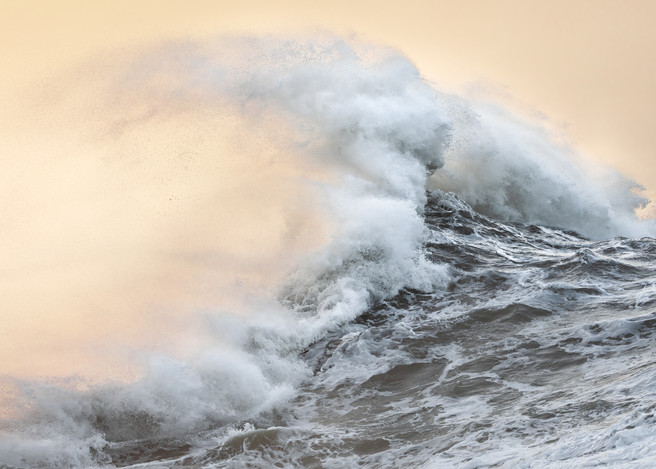
Etain is my newest ‘Siren’. In the years since Sirens was created, Newhaven has become a popular beach for people hoping to photograph their own wave-monsters and I like going there less now as it feels rather crowded. However, on this morning, I had the beach to myself, probably because I got there very early and the forecast wasn’t especially exciting. The lovely apricot sunrise allowed me to capture a rather different Siren. I named her after the Celtic goddess of love, transformation and rebirth. I was saving her for a special exhibition that would have raised money for charities working against climate change but it had to be cancelled because of COVID-19 so I published her during lockdown instead. Etain is associated with healing so she seemed the perfect goddess for these times.
Did you manage the project and design yourself or did you work with an editor?
Greg Stewart of Kozu Books worked on the design and editing with me. It’s a team effort.
How did you decide on the format of the book e.g. size and paper, print type?
With size, there are cost constraints based on how many pages can be printed on a single sheet and we went with the biggest size that met Kozu Books’ requirements. I chose the best quality paper they offered and, after some thought, I decided I wanted a picture on the cover rather than Kozu Books’ usual plain cloth cover. When you work with a publisher rather than self-publishing, compromises are required but, on the other hand, you get to work in a team and I think sometimes you can be too close to your own work to make the best decisions if you don’t have someone else involved.
You worked with Kozu Books on your book 'Landscape Editions Volume Nine | Rachael Talibart The Coast' Is it more of a partnership and collaboration relationship that you have with Greg Stewart at Kozu book?
There’s no connection between the two projects really. I chose Kozu Books this time because I also buy a lot of photobooks and have really liked some of their recent publications, not least Adam Gibbs’s ‘Quiet Light’. I was impressed when I ordered a ‘second’ (because I was too slow off the mark to get anything else) of that book. The book arrived and I had to try quite hard to find the small defect that made Greg sell it as a ‘second’. That showed me that he has integrity, a commitment to quality and an eye for detail.
We interviewed Greg Stewart at Kozu Books back in Oct 19 to learn more about the insights into the production of photo books and he says 'The specification of each book is dependent on the potential audience of each individual photographer and their specific series/project. ' How did you work with Greg to agree the format, layout and design of the book and did you take into account the potential audience?
We did discuss the audience, not least to determine the size of the print run, which is also influenced by my need to have enough copies to supply to the galleries that represent me. I was terrified when Triplekite decided to print 1000 Sirens – I was convinced they’d never sell. They did, so I am trying to be a bit braver this time (I’m still scared though)! We also considered my audience when choosing the different special and collector’s options. As I am represented by galleries and a lot of my photos are mid-way through their editions, it was quite complicated to choose which prints, and how many, to make available for these offers. We got there in the end and I’m glad to say those special and collector’s editions are proving popular. They offer people a way to own a print at a more affordable price without impinging on the prints being sold by the galleries.
Thanks for your time Rachael, and hope the new book is as an equal success as your previous one.
Here’s a link to the pre-order page for the book: https://www.kozubooks.com/books-new/tides-and-tempests-by-rachael-talibart
Book Specifications
Litho Printed in Bath, UK
Casebound
Thread Sewn
300mm x 240mm Landscape
Printed Cover with Foiling to Front Cover, Back Cover and Spine
Text: 160pp Heaven 42 Fine Matt Coated
End Papers: Colorplan
Images: 120+
Foreword by Hans Strand

